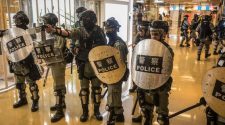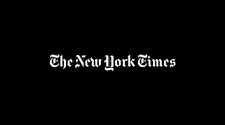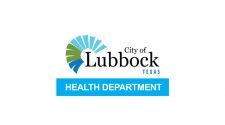Stocks rose Tuesday, with shares of cyclical companies continuing to outpace previously highflying tech stocks, while the S&P 500 approached its all-time closing high from February, nearly completing a round trip from its pandemic-induced plunge earlier this year.
What are major indexes doing?
The Dow Jones Industrial Average
DJIA,
rose 305 points, or 1.1%, to 28,096, while the S&P 500
SPX,
advanced 16 points, or 0.5%, to 3,377. The tech-heavy Nasdaq Composite
COMP,
lagged the other benchmarks, down 15 points, or 0.1%, to 10,953.
The Dow
DJIA,
on Monday rose 357.96 points, or 1.3%, to finish at 27,791.44, while the S&P 500
SPX,
edged up 9.19 points, or 0.3%, to close at 3,360.47, just 0.8% away from its Feb. 19 record close of 3,386.15. The Nasdaq Composite
COMP,
meanwhile, dropped 42.63 points, or 0.4%, ending at 10,968.36.
What’s driving the market?
Investors took note of the drop by highflying tech shares Monday as industrials, energy and other beaten down sectors rallied. Some analysts have been looking for a potentially sharp near-term rotation out of popular growth oriented stocks toward more cyclical shares once there were signs the worst of the pandemic was past and the economy could head toward a fuller reopening.
Read:Don’t assume this stock-market value rotation will stick, J.P. Morgan says
“In our central scenario, we expect no renewed nationwide lockdowns. Moderate restrictions on activity should be sufficient to keep outbreaks manageable, with a vaccine widely available from 2Q 2021,” said Mark Haefele, chief investment officer for global wealth management at UBS.
Combined with expansionary monetary policy and a moderate boost to fiscal stimulus, that would allow for a rebound in economic activity to pre-pandemic levels by 2022, he said, in a note. With yields anchored near record lows, the equity risk premium can normalize to pre-pandemic levels, allowing the S&P 500 to trade at 3,500 by the end of June 2021, Haefele said.
The Dow’s gains in afternoon trade were led by shares of JPMorgan Chase & Co.
JPM,
American Express Co.
AXP,
and Boeing Co.
BA,
but with Apple Inc.
AAPL,
its biggest drag, exemplifying the day’s shift away from soaring tech shares to stocks more tethered to economic performance.
“You’re starting to see a big catch up trade,” said Sam Hendel, president and co-portfolio manager at Levin Easterly Capital, in an interview, about the recent rally in equities away from the handful of technology companies that have led stock benchmarks higher, as the pandemic forced many white collar jobs to be done from home.
“Tech has really shined,” he said, but added that several catalysts, including optimism around an earnings recovery and the development and distribution of an effective vaccine, would benefit downtrodden stocks over the long run.
The number of new COVID-19 cases in the U.S. has fallen 18% over the past 14 days, according to a New York Times tracker, while deaths have fallen by 6%.
“In several key states (Arizona, California, Florida, Texas), hospital bed usage by COVID-19 patients is now clearly in decline. This is a critical trend that should limit further reopening reversals in the near-term,” wrote analysts at Macquarie, in a note.
They cautioned, however, that the latest model update from the Institute for Health Metrics and Evaluation at the University of Washington points to rising risks in the fall. It shows 26 states with a greater than 1 in 40 chance of breaching their intensive-care unit capacity by Nov. 1, up from 17 states previously. Another 12 states are at risk of doing so by Dec. 1, they noted.
Meanwhile, Russia registered the world’s first COVID-19 vaccine, President Vladimir Putin said on Tuesday. The announcement marked a milestone in the race to find a vaccine against the disease, but raised international concerns that Moscow had rushed the clinical evaluation of the treatment.
See: Russia’s accelerated COVID-19 vaccine greeted with alarm as experts say Phase 3 trial is essential
White House officials and top Democratic lawmakers on Monday indicated they were ready to resume talks on a coronavirus aid package after President Donald Trump over the weekend signed executive orders that would extend some elements of existing help that lapsed at the end of July, though there as little sign of movement. Trump’s orders, meanwhile, could face legal and logistical hurdles.
Investors, however, did appear to seize on Trump’s remark late Monday, in which he said the administration was considering a capital-gains tax cut.
“This is old news in a sense as Trump has floated this idea before, but markets may have taken it more seriously this time as the president seems eager to bypass the deadlocked Congress if he can,” said Marios Hadjikyriacos, investment analyst at XM, in a note.
The National Federation of Independent Business said its Small Business Optimism Index fell to 98.8 in July down 1.8 points from June. Economists surveyed by The Wall Street Journal expected a reading of 99.9.
The July producer-price index rose by 0.6% in July. Economists surveyed by MarketWach had forecast a rise of 0.3%. Core PPI, which strips out food and energy costs, rose 0.3%.
Which companies are in focus?
- Airline stocks were on the rise, lifted by a rebound in traveler demand to its highest level since the pandemic began as well as upbeat analyst comments. United Airlines Holdings Inc.
UAL,
+0.58%
shares were up 2.8%, American Airlines Group Inc.
AAL,
+1.25%
rose 3.4%, and Delta Air Lines Inc.
DAL,
+3.08%
shares rose 4.3%. - Shares of Canada Goose Holdings Inc.
GOOS,
-3.50%
fell 3.2% after the company reported a widening loss and a sharp drop in revenue. - Casper Sleep Inc.
CSPR,
-5.21%
shares dropped 4.3% after the mattress seller reported a narrower-than-expected loss in the second quarter. - Shares of Uber Technologies Inc.
UBER,
-1.69%
fell 1% and Lyft Inc.
LYFT,
+0.16%
gained 0.6% after a California judge on Monday ruled the ride-sharing companies must classify their drivers as employees due to a new state law. - Airbnb Inc., another sharing economy company, is getting ready to file its paperwork to go public later this month, laying the groundwork for a potential listing before the end of the year, The Wall Street Journal reported Tuesday, citing people familiar with the matter.
- Beaten-down financial sector stocks rallied as Treasury yields rose, with the Financial Select Sector SPDR ETF
XLF,
+2.17%
up 1.5%. - Qualcomm Inc.
QCOM,
+3.65%
shares were 4.2% higher after a report that a U.S. appeals court tossed out an antitrust ruling against the chip maker.
What are other markets doing?
In Asia trade, China’s CSI 300 index
000300,
fell 0.9%, while Hong Kong’s Hang Seng Index
HSI,
rose 2.1% and Japan’s Nikkei 225 Index
NIK,
advanced 1.9%.
In Europe, the pan-European Stoxx 600 Europe Index
SXXP,
and the FTSE 100
UKX,
each rallied 1.7%.
The yield on the 10-year Treasury note
TMUBMUSD10Y,
rose 8 basis points to 0.65% as investors shunned haven assets. Bond prices move inversely to yields.
Gold
GC00,
retreated Tuesday from record territory, with December futures tumbling 4.6% to settle at $1,946.30 an ounce. Crude oil was flat, with U.S. benchmark futures
CL.1,
trading around $41.92 a barrel.
The greenback was down 0.1%, with the ICE U.S. Dollar Index
DXY,
a gauge of the buck against a half-dozen major rivals, at 93.52.

















